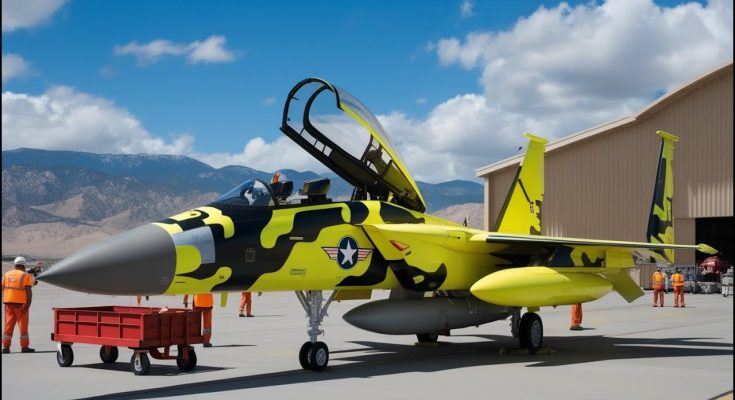The U.S. Air Force’s F-15EX, an advanced version of the venerable F-15 fighter jet, represents a significant leap forward in terms of both performance and capability. With hypersonic weapons integration expected by 2025, the F-15EX has the potential to alter the balance of military power, particularly in relation to China, which has been investing heavily in advanced missile technology and modernizing its own military capabilities. But will the F-15EX, with its hypersonic capabilities, be enough to scare China into changing its military strategy? The answer depends on several factors, including the technological effectiveness of the F-15EX, the broader geopolitical context, and China’s response to these developments.
Hypersonic Capabilities and Their Impact
Hypersonic weapons are defined as those that travel at speeds greater than Mach 5 (five times the speed of sound). The integration of these weapons on platforms like the F-15EX gives the United States an edge in terms of both speed and the ability to strike rapidly. These weapons are especially difficult to counter because they can maneuver unpredictably during flight, making them harder to track and intercept by traditional missile defense systems.
The F-15EX is designed to carry a variety of next-generation weapons, including hypersonic missiles. Its ability to integrate these weapons with its advanced avionics and enhanced payload capacity allows it to deliver precise, high-speed strikes at targets across vast distances. When deployed, hypersonic weapons on the F-15EX could strike Chinese military infrastructure, naval assets, or even key command and control centers in a matter of minutes, significantly shortening response times compared to conventional weapons.
Will the F-15EX Scare China?
China has made significant strides in military modernization, particularly in hypersonic missile technology, which is one of the focal points of its military expansion. In 2021, China conducted a successful test of a hypersonic glide vehicle that surprised many defense analysts due to its technological sophistication. China’s efforts have been focused on developing weapons capable of bypassing missile defense systems and holding adversary assets at risk, both on land and at sea.
In response to the U.S.’s increased focus on hypersonic technology, it is likely that China will accelerate its own research and development of similar systems to maintain its competitive edge. However, the F-15EX’s ability to deliver hypersonic weapons could still have a psychological effect. The U.S. showing capability to strike with near-impunity, from a highly maneuverable platform that is already operational and could be deployed rapidly, could certainly introduce new uncertainties into Chinese strategic calculations.
However, the F-15EX alone may not be a game-changer in terms of sheer intimidation. While it represents a highly advanced platform, China’s military has already been adapting to rapidly changing technologies, including hypersonics. Furthermore, the F-15EX’s primary role is as an air superiority fighter and multirole combat aircraft, meaning it is not solely focused on hypersonic weapons. While its role in hypersonic weapon integration is significant, its broader impact on China will be more about how it fits into the larger framework of U.S. deterrence.
Geopolitical Context
The balance of military power in the Indo-Pacific region is shaped by a variety of factors, including the presence of U.S. allies like Japan, South Korea, and Australia, which add strategic weight to the U.S. position in the region. The growing concern over China’s expansionist ambitions, particularly in the South China Sea and around Taiwan, has driven both the U.S. and its allies to strengthen deterrence. In this context, the F-15EX with hypersonic weapons will be part of a broader strategic calculus, combining advanced platforms, missile defense, and cyber capabilities, alongside military alliances.
Conclusion
The F-15EX hypersonic jet could certainly influence China’s perception of U.S. military capabilities, but whether it will “scare” China is uncertain. While the hypersonic missile capabilities of the F-15EX offer significant advantages in terms of speed and unpredictability, China’s own advancements in hypersonic technology and its growing military power will likely ensure that the U.S. and China remain locked in a technological arms race. Ultimately, the F-15EX is just one part of a broader strategy for maintaining a credible deterrence against China, and its true effectiveness will depend on how it fits within the larger context of U.S. defense posture and diplomatic efforts in the region.



